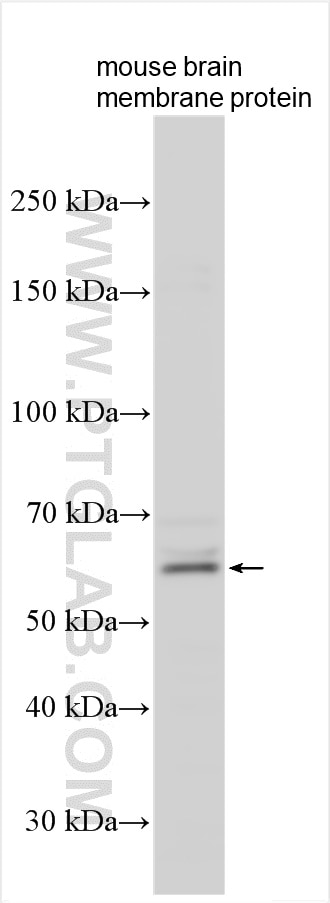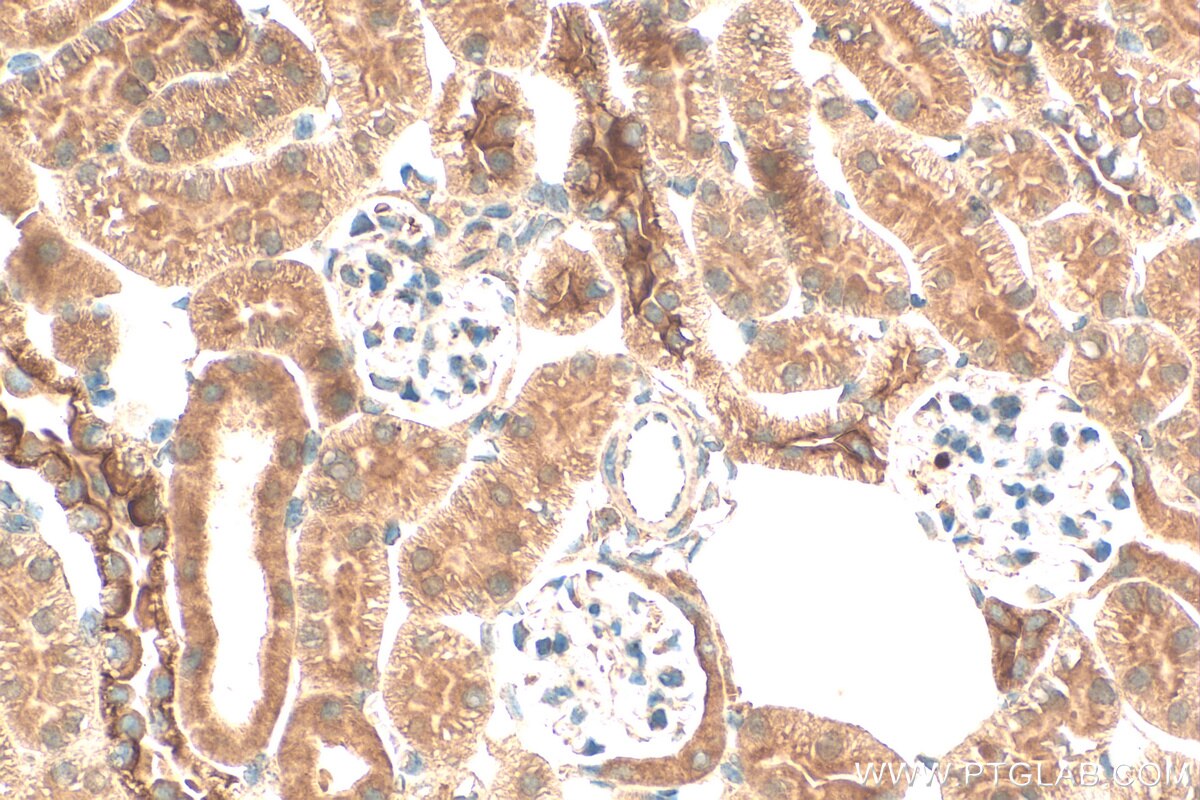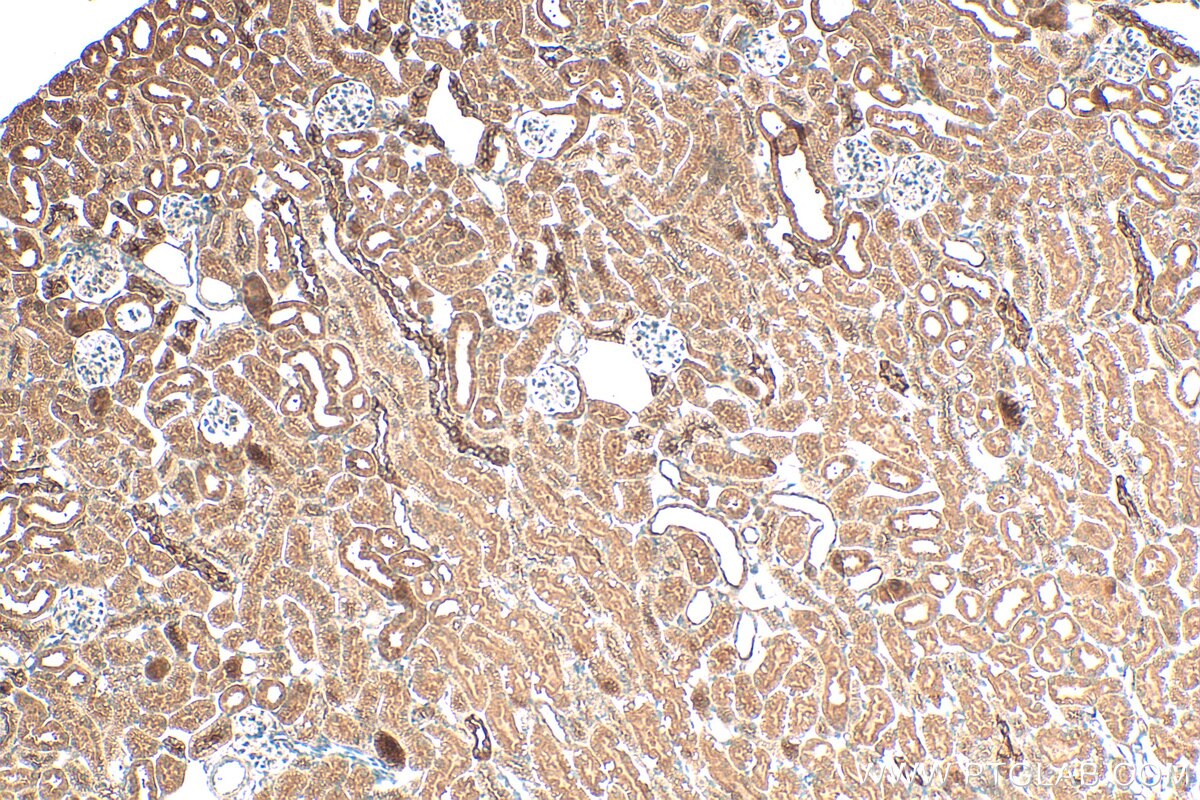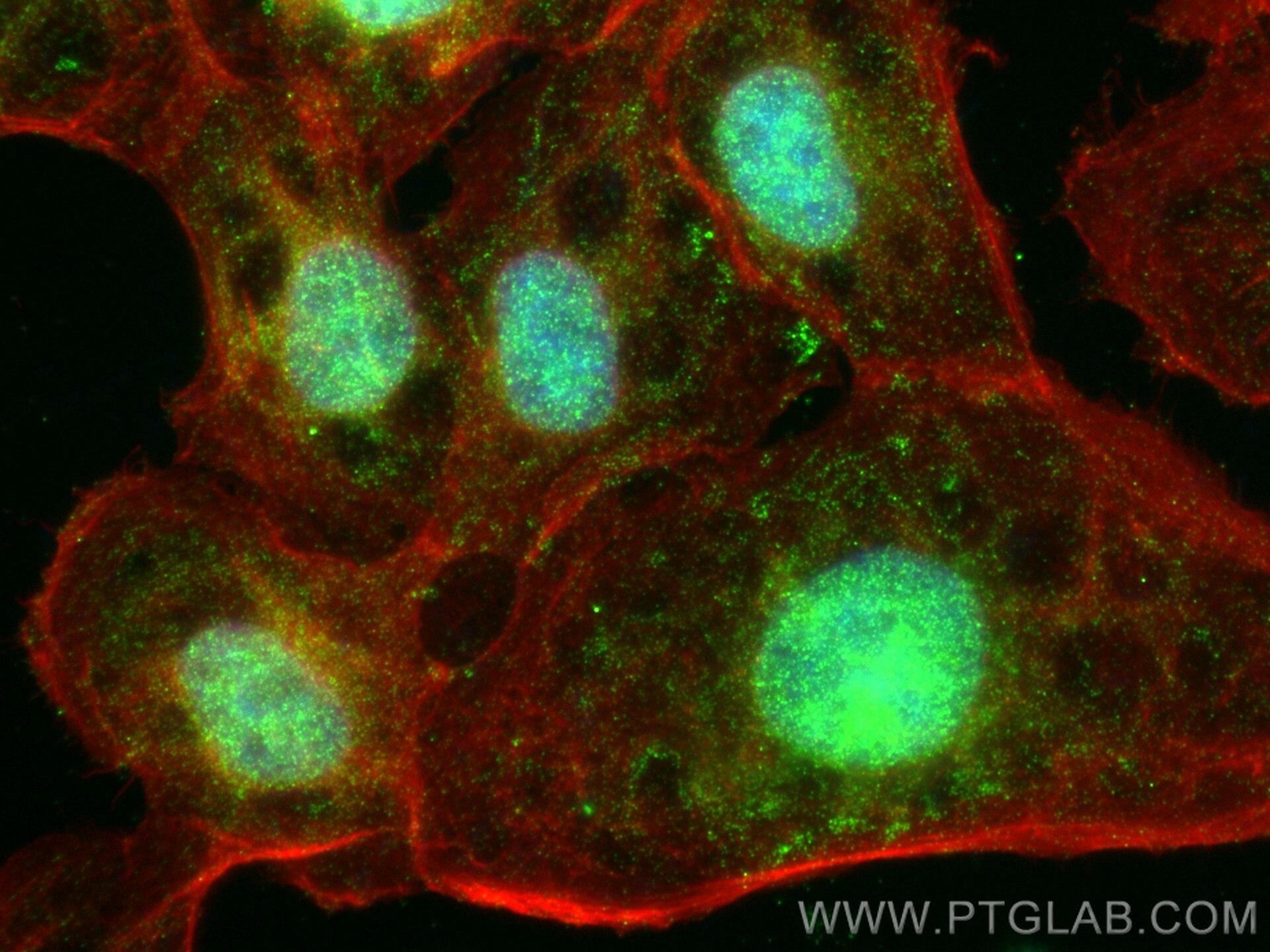OSTM1 Polyklonaler Antikörper
OSTM1 Polyklonal Antikörper für WB, IHC, IF/ICC, ELISA
Wirt / Isotyp
Kaninchen / IgG
Getestete Reaktivität
human, Maus
Anwendung
WB, IHC, IF/ICC, ELISA
Konjugation
Unkonjugiert
Kat-Nr. : 14621-1-AP
Synonyme
Geprüfte Anwendungen
| Erfolgreiche Detektion in WB | bei 37°C inkubiertes Maushirngewebe, mouse brain membrane protein |
| Erfolgreiche Detektion in IHC | Mausnierengewebe Hinweis: Antigendemaskierung mit TE-Puffer pH 9,0 empfohlen. (*) Wahlweise kann die Antigendemaskierung auch mit Citratpuffer pH 6,0 erfolgen. |
| Erfolgreiche Detektion in IF/ICC | A431-Zellen |
Empfohlene Verdünnung
| Anwendung | Verdünnung |
|---|---|
| Western Blot (WB) | WB : 1:500-1:1000 |
| Immunhistochemie (IHC) | IHC : 1:50-1:500 |
| Immunfluoreszenz (IF)/ICC | IF/ICC : 1:50-1:500 |
| It is recommended that this reagent should be titrated in each testing system to obtain optimal results. | |
| Sample-dependent, check data in validation data gallery | |
Veröffentlichte Anwendungen
| WB | See 2 publications below |
Produktinformation
14621-1-AP bindet in WB, IHC, IF/ICC, ELISA OSTM1 und zeigt Reaktivität mit human, Maus
| Getestete Reaktivität | human, Maus |
| In Publikationen genannte Reaktivität | human, Maus |
| Wirt / Isotyp | Kaninchen / IgG |
| Klonalität | Polyklonal |
| Typ | Antikörper |
| Immunogen | OSTM1 fusion protein Ag6254 |
| Vollständiger Name | osteopetrosis associated transmembrane protein 1 |
| Berechnetes Molekulargewicht | 37 kDa |
| Beobachtetes Molekulargewicht | ~ 60 kDa |
| GenBank-Zugangsnummer | BC068581 |
| Gene symbol | OSTM1 |
| Gene ID (NCBI) | 28962 |
| Konjugation | Unkonjugiert |
| Form | Liquid |
| Reinigungsmethode | Antigen-Affinitätsreinigung |
| Lagerungspuffer | PBS with 0.02% sodium azide and 50% glycerol |
| Lagerungsbedingungen | Bei -20°C lagern. Nach dem Versand ein Jahr lang stabil Aliquotieren ist bei -20oC Lagerung nicht notwendig. 20ul Größen enthalten 0,1% BSA. |
Hintergrundinformationen
OSTM1 is a type I transmembrane protein. Ostm1 is essential for osteoclast maturation and is responsible for the most severe forms of osteoporosis when mutated in mice and humans. The OSTM1 protein has 10 N-glycosylation sites and has an apparent mass of ~60 kDa after being highly N-glycosylated (PMID: 26598607; PMID: 32764302). The OSTM1 protein can also be detected at ~30-45 kDa and ~70-80 kDa in some literatures (PMID: 16525474; PMID: 24159188;PMID: 20830208).
Protokolle
| PRODUKTSPEZIFISCHE PROTOKOLLE | |
|---|---|
| WB protocol for OSTM1 antibody 14621-1-AP | Protokoll herunterladen |
| IHC protocol for OSTM1 antibody 14621-1-AP | Protokoll herunterladenl |
| IF protocol for OSTM1 antibody 14621-1-AP | Protokoll herunterladen |
| STANDARD-PROTOKOLLE | |
|---|---|
| Klicken Sie hier, um unsere Standardprotokolle anzuzeigen |
Publikationen
| Species | Application | Title |
|---|---|---|
J Virol Osteopetrosis-Associated Transmembrane Protein 1 Recruits RNA Exosome To Restrict Hepatitis B Virus Replication. | ||
Biology (Basel) Leucine Repeat Rich Kinase 1 Controls Osteoclast Activity by Managing Lysosomal Trafficking and Secretion |





